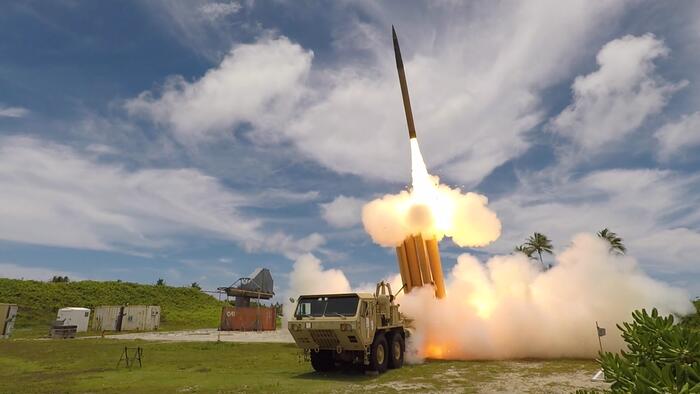The Israeli government has recently indicated that the United States is preparing to deploy the THAAD (Terminal High Altitude Area Defense) anti-ballistic missile system in Israel, a development that raises significant concerns about military engagement and the safety of U.S. personnel in the midst of rising tensions with Iran. Reports from Israeli media, including Channel 12 news and Army Radio, suggest that this deployment is part of a broader strategy in anticipation of a strong Israeli response to Iran’s recent missile attacks. The system, designed to intercept short to intermediate-range ballistic missiles, would reportedly be operated by U.S. troops stationed on Israeli soil, marking a considerable escalation in military cooperation between the two nations amid an already volatile regional landscape.
The potential deployment of THAAD in Israel plots a complicated course for U.S. foreign policy, particularly as it unfolds without formal Congressional approval. Such a move signifies an increase in direct military involvement by the U.S. in Middle Eastern conflicts, especially concerning Iranian threats. Highlights from various Israeli media outlets reiterate that this action reflects Washington’s belief that an Israeli strike against Iran is imminent and that Iran’s missile capabilities pose a serious risk to Israeli national security. The recent missile exchange has heightened the likelihood of Iranian forces targeting U.S. assets or troops when retaliation occurs, which raises critical questions about military readiness and American lives at stake.
There have, however, been some conflicting reports regarding the THAAD deployment. While certain Israeli reporters affirm that U.S. operators will be manning the THAAD systems, other sources indicate that a final decision has yet to be made by U.S. officials. This discrepancy highlights the fluidity and secrecy surrounding military operations in the region, suggesting that there may be internal discussions within the U.S. that have not yet been publicly resolved. The absence of official approval for such a deployment indicates that while preparations may be underway, the actual engagement may depend on a variety of factors, including reactions to Iranian provocations or developments in U.S.-Israel relations.
Analysis from regional experts indicates that the decision to deploy American missile defense systems in Israel could signify a significant shift in military postures, especially regarding the traditional Israeli stance of self-defense. Historically, Israeli leadership has emphasized its capability to defend itself without dependence on foreign military assets. This recent pivot could demonstrate both the strengths of the U.S.-Israel alliance and the complexities involved, especially if Israel appears reliant on American military support to address threats from Iran. Such a collaboration could potentially alter decades of established defense strategies and provoke discussions on sovereignty and strategic autonomy.
The prospect of U.S. boots on the ground in Israel, albeit in a defense capacity, also raises concerns about escalating tensions and the implications for broader U.S. military commitments in the region. Previous engagements have seen U.S. special forces operating in advisory roles, but the deployment of THAAD represents a potential shift that could draw the U.S. deeper into the conflict dynamics of the Iranian-Israeli confrontation. The possibility of Iranian retaliation against U.S. forces stationed in Israel in the event of an escalated conflict could create a precarious situation for all parties involved.
With the backdrop of the significant Iranian missile strike on Israel that occurred on October 1, the regional situation has become increasingly critical. Israeli responses have leaned toward a promise of severe retaliation against Iran, with some suggesting that military operations are closely on the horizon. As the U.S. administration contemplates its course of action, it will be essential to observe how both the Israeli and Iranian narratives unfold in the coming days. The interplay of military deployments, strategic alliances, and regional confrontations highlights a complex crossroads for U.S. military involvement in Israel and its broader consequences in the Middle East.

